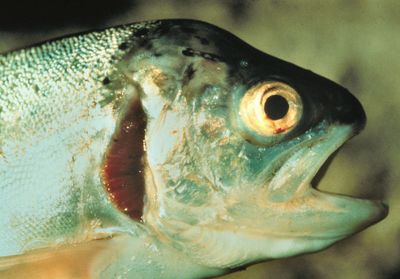Montana trout rebounding
Famed river’s rainbows had been decimated by whirling disease

HELENA – Rainbow trout are rebounding in the Madison River, the world-class fishing stream where Montana’s first known outbreak of whirling disease occurred about 15 years ago and then devastated the rainbow fishery.
In the 1990s, whirling disease slashed the rainbow trout population by 90 percent compared to levels measured in the 1960s and ’70s.
Now, after a succession of rebound years, rainbows under 10 inches have “pretty well recovered to pre-whirling levels,” and the population of those larger is about 60 percent of what it was before the disease, said Dick Vincent, whirling-disease coordinator for the Montana Department of Fish, Wildlife and Parks until his retirement last winter.
Rainbows in the blue-ribbon Madison River, where guides this summer charge about $425 per boat for a day of fishing, have developed considerable resistance to the disease, a parasitic malady often characterized by a tail-chasing whirl. How that resistance came about is unknown, Vincent said.
Whirling disease, which does not infect humans and is known to exist in about 20 states, is attributed to a microscopic parasite that attaches to the skin of young fish. Institutions researching the disease include Montana State University, which estimates that in Montana, whirling disease affects 150 streams.
Dying rainbow trout release spores into the water that may remain viable for years and are eaten by tiny worms. The worms excrete an infectious parasite, which attaches to fish. Young ones are particularly vulnerable to parasitic attacks, which can cause nerve damage, skeletal deformities and sometimes death.
In the United States, whirling disease was first observed in about 1958, according to the state Division of Wildlife in Colorado, where the disorder has been confirmed in 13 of the state’s 15 major river drainages.
While the improvement on the Madison is encouraging, Vincent said, “the parasite hasn’t gone away. It’s still there.”